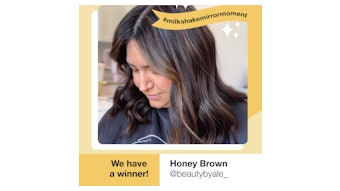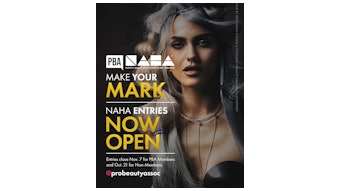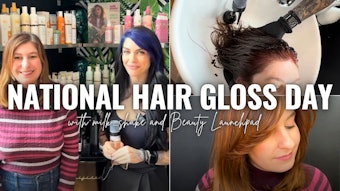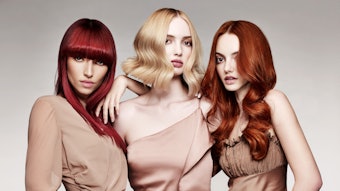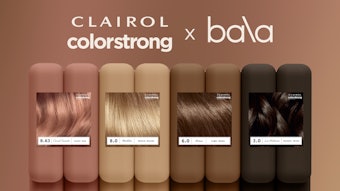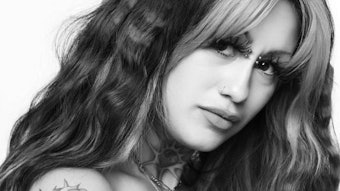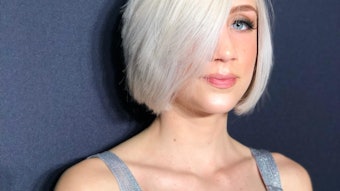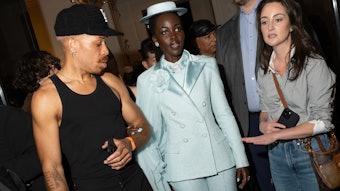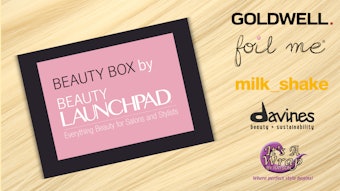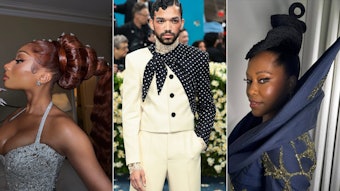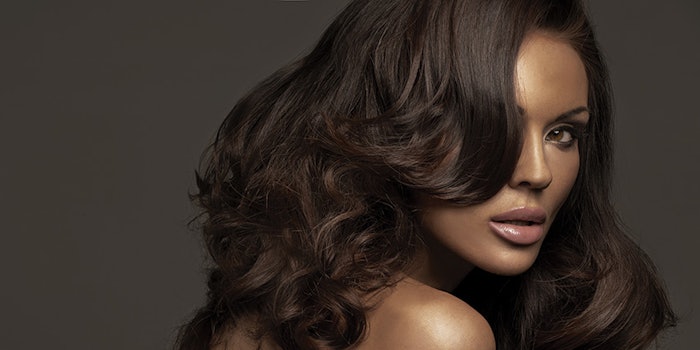
In the competition to grab more media headlines, more how-tos, more Instagram posts, and simply more of our collective attention, blondes certainly appear to trump brunettes. “Brunettes don’t always get the attention they deserve,” Yara de la Torre of Lashes and Curls Studio in Key Largo, Florida, laments. Agrees Cameron Kepford of Haus of Heir in Davenport, Iowa, “This is something I’ve recognized in the world of social media. As I scroll through my feed it’s constantly showcasing blondes. Although I love a phenomenal blonding session, dimensional brunettes are incredible.”
Could it be that stylists—and the general public, ad nauseum—simply don’t understand the nuances of brunettes? Ashlie Marmo of Posh Color Studio in Easton, Pennsylvania, thinks this could contribute to the brunette dismissal. “People always think that when you’re brunette, it has to be solid-looking. But by just adding in a different tone, colorists can make the haircolor stand out and give it life,” she argues.
Though nobody can be 100-percent certain, the common belief behind why brunettes get relegated to second place in the haircolor wars boils down to this prevalent idea: They’re often harder to sucessfully achieve—like, really hard. “Brunettes can be tricky to accomplish and that can be a little intimidating for stylists,” de la Torre explains. “Too many highlights? Your clients will feel overly blonde. Too few highlights? Your clients feel like nothing was done.”
Not to mention, lifting brunettes inherently comes with more challenges; you’re working against an abundance of darker pigments. “There are more pigments to blend and cancel,” Kepford stresses. Achieving a nice, even lift can be tricky, says Rachel Rush of R+R Salon in Frisco, Texas. “Sometimes you’ll find old dark dyes that you have to navigate, too,” she says. And, as we all know, brunettes tend to pull brassy. “To get a brunette to a beautiful caramel tone or a soft warm color without turning it brassy can be a difficult target to hit,” shares Carlos Rojas of GGHD Salon in Dallas. Finally, ample toning options for brunettes require truly masterful formulation skills, which Rush admits can be tough at first.
“But there is a sweet spot somewhere between too light and too blah where you can achieve gorgeous dimension while still keeping your client true to her roots (pun intended) and offering a fresh, upgraded look,” de la Torre says. Here, our pros dive into the world of chocolates, cocoas, caramels and lattes—a vast world deserving of your respect, consideration and IG feed.
Getting Brunettes Right
First things first: Like with every single hair service you provide, the path to brunette perfection begins with the consultation. “This is where expectations are defined,” Kepford stresses. He recommends asking clients the following questions:
- Do they have permanent color on their hair?
- Do they have at-home color on their head?
- What is their desired level?
- What is their definition of “chocolate” or “caramel”? Ask for imagery if possible.
- What lighting situations do they see their hair in most? (For example: Do they work in an office, near a window, etc.?)
“The more aware you are of your game plan, the more you will be able to achieve your end goal,” Kepford says.
If you’re working with new clients, Rush recommends beginning with a test strand prior to the color service. “Some clients don’t understand that once they have done box dye or dark dyes, the color stays on the hair until it grows out,” she says. A test strand allows you to determine if the client has been truthful about their hair history, while also showing the client what is realistically possible.
Once you’ve nailed down the client’s hair history and wishes, de la Torre suggests keeping in mind that, as a colorist, you should “preserve the essence of being a brunette. That means: You’re going to want to be really careful where you apply your lightness.” She points to these situations that can leave brunette clients disgruntled:
• A too-thick-and-bold moneypiece around the face could be jarring to clients.
• Overlightening the ends could throw off clients.
“It’s crucial that we keep in mind dimension and allow a lot of ‘negative space’—aka dark hair—to remain between your lightened areas,” de la Torre adds.
To put it into perspective, Marmo encourages you to picture brunettes in the sunlight. “Try to mimic where the sun will naturally lighten the hair. This gives your brunette creations a seamless grow-out. I like to add brightness around the face specifically and scattered throughout the top,” she says.
That’s not to say there aren’t brunettes who covet a bit of drama—think: a high-contrast moneypiece or ombré ends. But, on the whole, you’re aiming to hit that sweet spot de la Torre mentioned above for the bulk of your brunette clientele.
Problem-Solving Brunettes
Remember when we said designing the perfect brunette color is technically hard (like, really hard)? Luckily, common missteps can be righted—here’s how.
Problem #1: overlightening your canvas. “Stylists can sometimes fall back on their trusted patterns and applications that they usually use for blondes,” says de la Torre. This leads to ... well ... blonde results. “There is such a thing as doing too much to a brunette,” adds Marmo. “I find that less is always more.”
The Fix: Section off the hair before you begin, which de la Torre says is a big game changer. “By sectioning off the hair, you’ll be able to get a bird’s-eye view of how the hair naturally falls and then determine exactly how you want to tackle each of those sections,” she says. Keep in mind that you don’t want to overfoil or overpaint. Her rule of thumb: Paint or foil about 30- to 50-percent less than you would a blonde, leaving the client’s natural brunette as depth in between lightness.
Problem #2: working too fast. “I see a lot of stylists who don’t want to take the time to create a clean look,” says Kepford. He points to this example: During a traditional base and highlight, stylists apply the brunette base first and then go back through to perform the highlight while the base is still processing. “The lightener is lifting as the base is depositing,” he says.
The Fix: “Create your road map before applying any color,” says Kepford. This way, you won’t end up working harder to get the desired results.
Problem #3: using permanent dye for low lights. “Stylists think this won’t make a difference,” says Rojas. It does. Permanent dye can wash out quickly and look flat.
The Fix: Use demipermanent dye that fades nicely. “I don’t use permanent unless I have a high percentage of gray to cover,” Rojas adds.
Problem #4: not taking the time to layer toners/glosses and let them process. “I think sometimes stylists get nervous about formulating warmth into the formula,” adds Rush.
The Fix: “Look at the hair strand as a canvas you have to build up,” explains Rush. She uses this example: Your Level 5 client wants Level 8 highlights, and lifted lighter at the roots (a Level 9) with target level on the ends (Level 8). “You want to take the raw highlight and prep it before you take it to the desired end result,” says Rush. “I call this a pre-toner. It is essentially color correction because your strand of hair didn’t lift evenly.” Her suggestion for this particular scenario: Use a warm Level 8 toner at the roots to mid-lengths in preparation for a shadow root. “This will help the desired color stick and not fall flat in tone,” she says, recommending Redken Shades EQ 8WG.
Continue reading Beauty Launchpad's October digital magazine for the top strategies for a dimensional brunette as well as four trends your clients will love.
